Our industry spends a lot of time talking about video production. In most industry magazines, you will read about video panels, projectors, media servers, data pathways and all of the associated equipment that make playback and live effects a reality — most live production across the world in 2018 either includes video playback and live camera feeds either as an aspect of the overall production design, or as most of the production design.
Our brains are trained from early youth to appreciate video; there is a considerable difference between the design of 20 years ago and now with respect to television versus live theater. In live theater, the designers have to tell the audience members where to look, and keep their attention focused by appropriately lighting the performers and their surroundings. In the world of video, we are conditioned to know where to look because television and movies have given us a hotspot on which to focus, no pun intended. We know to watch the screens — something magical is going to show up on the screens. When we go see a concert, we can count on being able to see the stars up close and personal via I-Mag. When the star’s close-up isn’t being broadcast for everyone, there’s dynamic content to draw our eyes to those screens, content created by artists specifically for the event. We can expect to be transported to some distant place, or to be bombarded by dancing pixels and colors at a rate that tickle our brains like a drug.
We don’t talk about those who make that magic very often, but this story is about one of the original makers, a content creator by trade. Content creators can take nothing and make something that heightens the wow factor of many shows past, and many more to come. Meet Mark Devlin of Mark Devlin Visual Design.
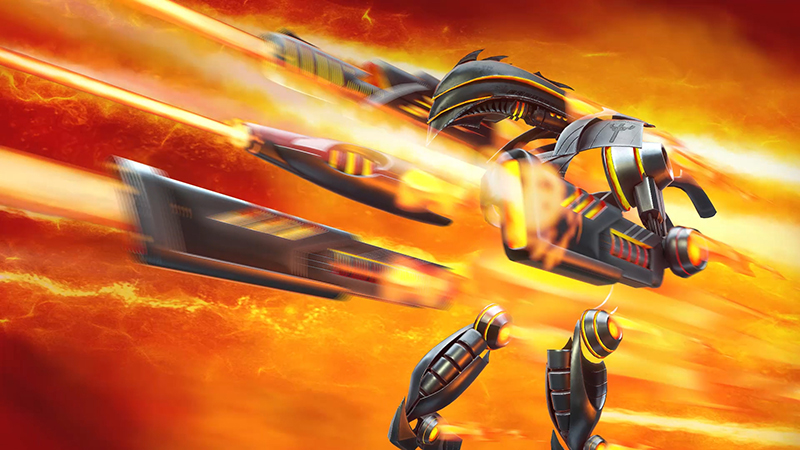
A visit to his website will tell you that Mark Devlin Visual Design “is an award-winning video content design and full-service production company.” For the last 28 years, they’ve specialized in designing, directing and producing creative environment for concerts, award shows, exhibits, architecture, themed attractions and music videos. Mark personally leads the creative process of every job he works on with his team. Mark’s worked with a long list of acts: Judas Priest, Heart, James Taylor, KISS, Def Leppard, Journey, ACDC, Metallica and Pitbull, to name a few. He’s worked on Dancing with the Stars and American Idol; he works in corporate entertainment, making solutions for events.
I got to speak with Mark about his career beginnings and some of the work on which he’s embarked in search of the perfect idea.
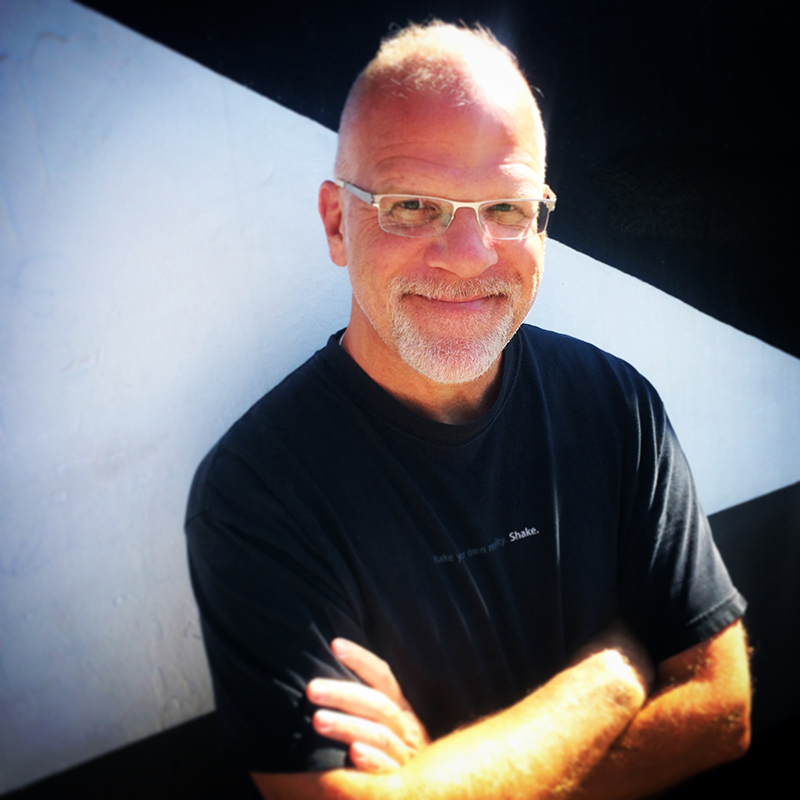
PLSN: Tell me how you started out and how did you get to where you are today? What’s your journey?
Mark Devlin: Literally, right place at the right time. I have a background of about 20 years of doing visual effects for film, television, motion pictures, and high end commercials. I was one of the compositors at Digital Domain, and MTV kind of ruined my career when reality TV took over and music videos went off TV. I was on Sunset Boulevard when I got a call from a friend of mine who was editing a DVD for Ted Nugent, and he said he needed a little animated opener, so I took some materials and came back about three hours later. There’s this guy in the corner playing guitar, and he says to me, ‘That’s really good. Hey, me and my buddies, we got this band. We’re thinking about going out on the road and we were thinking about maybe putting some TV screens on the stage. Maybe you’d like to do some TV screens for us. I’ll give you 200 bucks.’ My buddy and I went outside he says ‘you gotta do it! His buddies? His band? It’s KISS. That’s Tommy Thayer from KISS.’ So I went inside and said ‘You’re Tommy Thayer, aren’t you. Your buddies? Your little band? It’s KISS!’ And like everybody else who started in this industry, I accepted the job, worked real hard, and the next thing you know, this is what I’m doing for a living.
Jonathan Beswick was the director at the time, he went on to direct Journey, who opened up for Def Leppard. He called me up and said “I got another job. I don’t know if you’re interested but it’s Journey, and we’re opening up at the Hollywood Bowl, and I’ve got 10 grand.” Within six months I was the creative director for Journey. I was doing all the content for KISS. When we opened up for Def Leppard, they came backstage and said “Jon, you guys really stepped up your game,” and Jon just started laughing. “What are you laughing for?” And he says “Man, how much did you spend on your tour?” “Well, we spent about a quarter of a million.” Jon said, “Well, we spent ten grand.”
So within six months I was doing all the content for KISS, Journey and Def Leppard, and that’s kind of how my career started. I started off as the kid — the 40 year old kid — who had solutions that were simple, quick, easy to produce and could produce stuff at a reasonable budget. And I’ve grown since then.
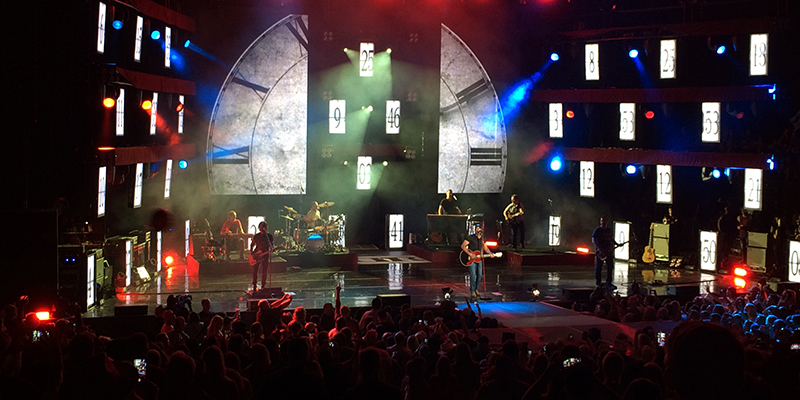
Just looking at your reel, there is so much variety — everything from machinery, to 3D animation, to scenes from a pop-up book — where do those ideas come from? Where do you gather inspiration?
Well, it used to be what I call a two-martini method where I would literally have two martinis, go into a room in my house, turn off all the lights and just play the music over and over until images just appeared in my brain. I would write that down and start the process of figuring out, “How the hell do I do that?” So I just left my brain alone to do its thing. Which, if you’ve ever had an extremely vivid dream, you realize how strong the brain’s creativity is. If you just leave it alone and let it go and not hold yourself back at all, it works.
So, the two martinis was my method back then, but I’ve since then realized that’s not very healthy for you, so now I just try to meditate for about 20 minutes and listen to music over and over again until the images just pop into my head. An example, the pop-up book for James Taylor — as soon as I started playing Sweet Baby James that just popped into my head, and I thought that was pretty cool. A pop-up book! I could illustrate all of the lyrics with pages turning. Only one problem: I have absolutely no idea how to make a pop-up book. That’s kind of the process — I come up with the idea that I have no concept how to create it, then it’s just a matter of researching and making the impossible possible.
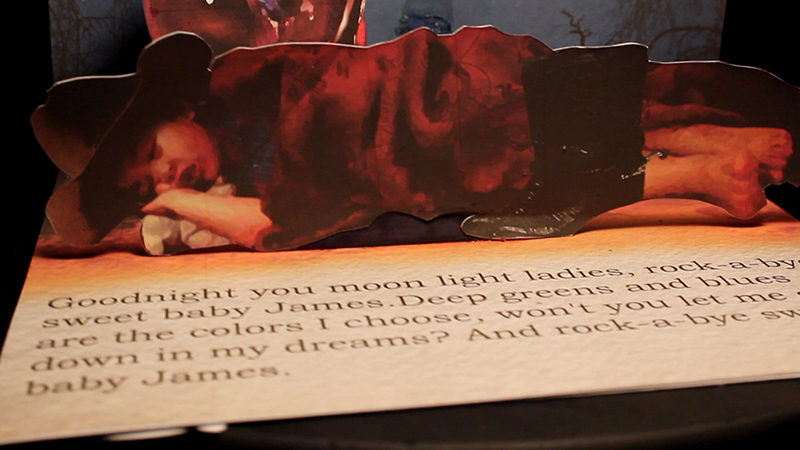
You’ve got a lot of variety — from Metallica to Judas Priest to James Taylor, Corporate cliental, television — what’s your preferred game?
I like variety. Visual effects took me all over the world. I have lived in China, Colombia, South America, India, Johannesburg and in Europe. When you have an opportunity to travel the world, you realize there’s no one right way of living, and the variety of cultures really changes you. It inspired me as an artist. For instance, I went from doing a piece for Judas Priest one week called Screaming For Vengeance into James Taylor, into the pop-up book a week later. What makes my work is the artists and the songs that I am visually interpreting. I don’t consider myself as a Content Designer as much as a person who visually interprets music. If the music touches me, you see it in my work. Darius Rucker is another artist that just keeps on making me cry with the words he says in his lyrics. It really hits home when he talks about being madly in love with his wife. When I go to visually interpret that, it comes out very strong.
My biggest strengths are my biggest weaknesses and my biggest weaknesses are my biggest strengths. One of my biggest weaknesses is that I’m an overly sensitive person, and that turns out to be my biggest strength when it comes to being a designer — if it’s a song that has meaning and I can understand the meaning and it touches my heart that really gets my creative juices going.

Can you look back on your career and pick out some personal peaks and personal highlights that you feel define your career?
Six months ago, I was asking myself if I’ve gone over the hill, if the best work I’ve ever done was stuff I’ve done in the past. When I finished up that Judas Priest tour, I had a real warm sensation that no, it hasn’t. Last year, when I was working with Metallica, same thing. When I finished the pop-up book video with James Taylor, same feeling. I know when I’m finished with a project — when I look at it and it’s done and I’m looking at it 20 times before I go to bed just thinking to myself, “That’s very cool, I like that, cool.”
I remember back in my 20s when I was in art college, that unrealistic freedom that you’re given as a student creatively doesn’t worry about time and budget. We want you to focus on concept. That thought process, that innocent creativity, is something that I will not allow myself to get rid of.
As a student, you get only what you’ve got around your dorm room and in the back seat of your old car. So I don’t allow technology to come up with my solutions. Right now, one of my favorite cameras is my iPhone. The quality is getting really great. We did a shoot for James Taylor two summers ago, and they wanted to have ocean streams. We took an entire crew up to Big Bear Mountain, only to find out that a drought had dried up the streams. I ended up using my iPhone 5S at an apartment complex that had some kind of Disneyland streams going through it, we shot it at 120 frames a second. It came out beautiful. I could have spent 1,500 dollars a day renting a camera, but I was out of budget because I spent it all sending the guys up to Big Bear. Sometimes keeping that student mentality creates really lucky mistakes.
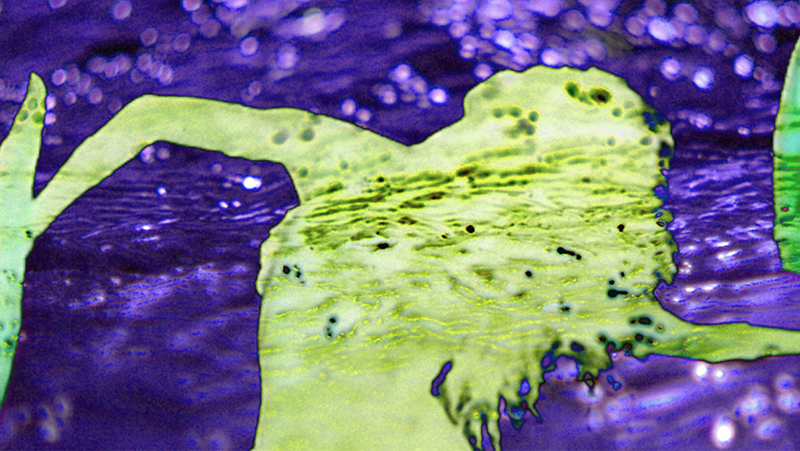
Can you speak a little on how you know when you’re “done” with a piece, when you feel satisfied with the outcome?
There are two ways, really: Either you know you’re done when you’re done because everything feels right, or you run out of time and you run out of money. I was doing a tour for KISS, the Sonic Boom tour, and they asked me to do 19 pieces of content in 14 days, and they gave me a budget that I only had enough money for one person. At one point, I had been up for three and a half days. It was Thursday, and the tour started at 7:30. I remembered something Paul Stanley said, that he liked the color red. The solution was red fading up and fading down, fading up and fading down, and that’s all that was for the entire piece. They loved it. So you just run out of time, you run out of money, or you know it’s finished when it’s finished, just kind of like when I met my wife, I just knew I was done.
Mark, tell me something that you would share with students up-and-coming that could help them in their careers — what piece of advice would you share with people who want to do this work?
I thought I’d never be able to get a job out of school because they didn’t teach me Photoshop, After Effects, none of it. I asked one of my professors, “How am I supposed to get a job if I don’t know how to use all this software?” He said that software is going to change every six months — what we’re teaching you is how to think, and that’s not something that is going to get upgraded with the next issue. So when you focus on technology, your work looks like everybody else’s. Just remember that regardless of what project you’re working on, regardless of what your situation is, be thankful that we get to do what we do, realize that realistically you’ve got everything that you possibly need right now, and just be grateful for everything that you have. Realize that regardless of what you do today, tomorrow is going to come anyhow.
For more information on Mark Devlin and the content he’s dreamed up over the years for various artists, visit www.md-visualdesign.com.


